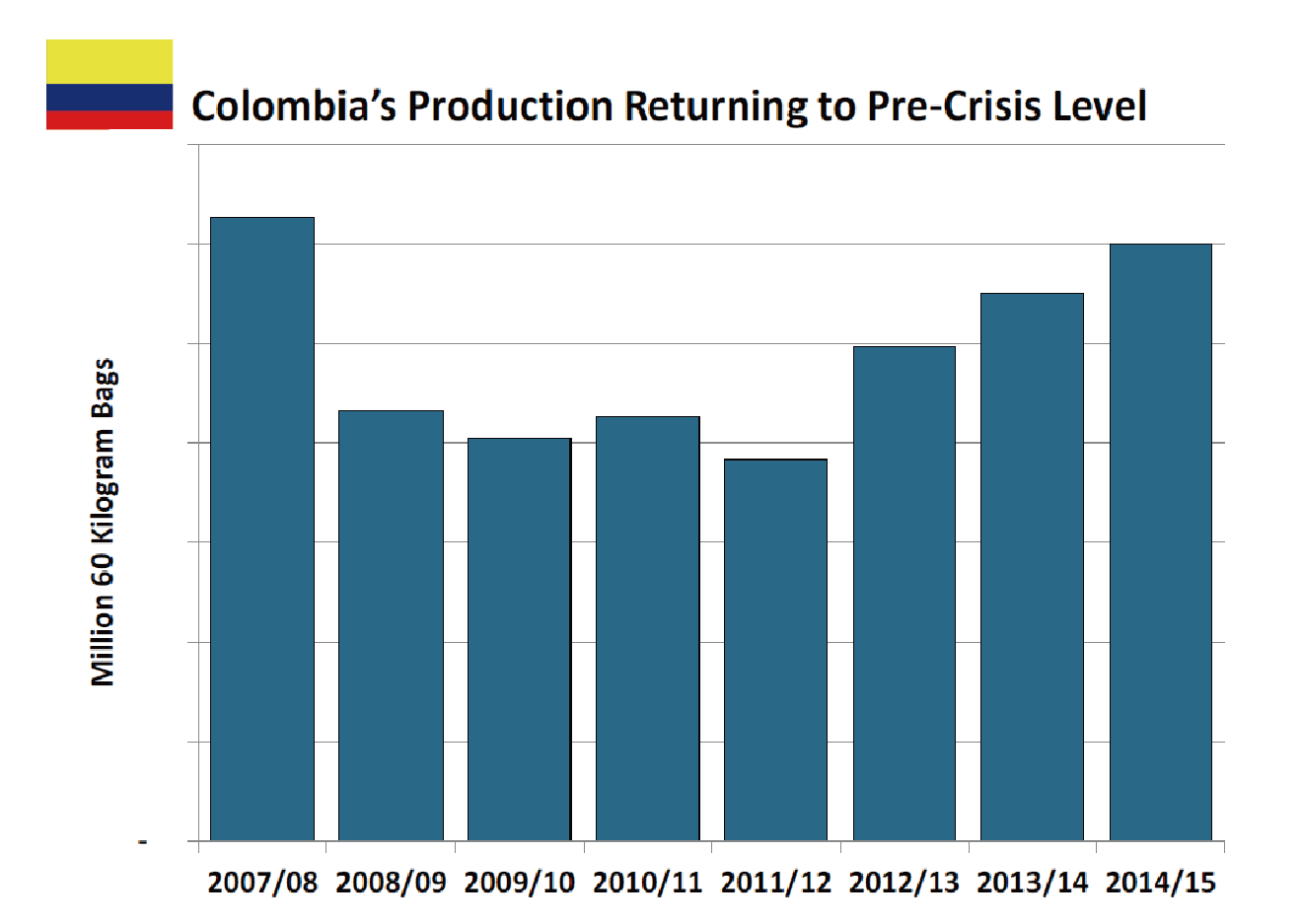Coffee crisis │ Coffee supply chain collapse warning

Warning of the collapse of coffee supply chain
Why sustainable farming is closely related to you and me
For professional baristas, please follow the coffee workshop (Wechat official account cafe_style)
Most coffee beans are produced by poorer developing countries in the southern hemisphere.
It is mainly supplied to rich developed countries in the northern hemisphere.
The coffee world has changed due to climate change.
According to the latest coffee production forecast from the United States Bureau of Agriculture (USDA), ── "although the world demand for coffee continues to rise, the actual output of raw coffee beans dropped by 1.5 million bags in 2014, with a total of only 147.8 million bags." There are many reasons for the decline in coffee production, such as prolonged drought and abnormal high temperatures in parts of Brazil, leaf rust and insect pests in Colombia, climate anomalies of excessive rainfall in Indonesia, and so on. This is definitely not alarmist talk, but due to global climate change, it does bring an unprecedented crisis to the coffee industry.
Out of the producing area, we went to the end of the coffee supply chain and found a very paradoxical phenomenon, because when coffee production kept falling due to climate change, leaf rust and other problems, today's coffee futures market is facing record-breaking high exports and high demand. "EU countries and the United States are the main demand markets for coffee. This year's forecasts are 46 million bags and 25 million bags respectively, and they are continuing to grow. What should not be ignored is the soaring coffee imports in emerging Asia, which have repeatedly set record highs." From all kinds of evidence, we can objectively make the following comments: the imbalance between supply and demand of coffee is already a fact, and if it can not be paid attention to and solved, it will trigger a more serious crisis.

Go deep into the origin, do you know how many coffee farmers are starving?
If we want to take a comprehensive look at the problems of the entire supply chain, we must first step into the lives of coffee farmers in the producing areas.
The Green Mountain Coffee (Keurig Green Mountain) research team, which has worked with the Agroecology Institute in the United States on a long-term production observation program, recently announced a fact that shocked the coffee industry: coffee farmers are facing severe seasonal famine. The project looked at coffee farmers in Mexico, Guatemala and Nicaragua. They pointed out: "in 2007, 67% of the local coffee farmers surveyed experienced a severe famine period of three to eight months, locally known as the 'month of Famine.' This means that when the income from coffee is used up before the next harvest, it will lead to months of seasonal famine. " It also reflects the most direct impact of the decline in production caused by climate change on coffee farmers.
According to statistics released by USDA (United States Bureau of Agriculture), when coffee leaf rust broke out in Colombia in 2008, one farm after another was infected, causing the country's coffee production to drop from 12 million bags to 7 million bags in a year. In the following four years, the producing area faced a sharp decline in coffee production. After the government and non-governmental sustainable farming organizations actively intervened to start the restoration forest program, it finally saw results. But the road to rehabilitation is still long and difficult.
The impact of climate change on the coffee industry is very wide, and local governments and important organizations around the world attach great importance to it. For example, the United States, the European Fine Coffee Association (SCAA; SCAE) and the World Coffee Association (ICO;International Coffee Organization) have also listed this topic as one of the important topics of the summit in the new year.
On the importance of "Sustainable farming" to Coffee Industry
"Global coffee production must increase by nearly 15% over the next five years to meet rising coffee demand from Brazil, the United States, Europe and Asia in response to the growth of the middle class population," the study said.
Hivos, an international development organization, said that many coffee-producing countries today, including Brazil, Vietnam, Honduras and Uganda, which are suitable for large-scale coffee cultivation at this stage, will face a serious and sharp decline in production caused by climate change by 2020. As a result, Hivos calls on the world's top 10 leading coffee roasters, such as Nestl é, Illy, Lavazza, to face up to this problem in a responsible manner and strive to increase the purchase of "sustainable coffee", because only in this way can more relevant enterprises in the world promote sustainable coffee. Many of these simultaneous issues around the world emphasize that in the near future, coffee will become a luxury in short supply. In other words, if either side of the supply chain refuses to contribute to the implementation of "sustainable farming", the consequences will be borne by everyone.
* Note 1: coffee exports are usually loaded in 60KG sacks.
* Note 2: the international development organization Hivos is an international non-profit organization launched in the Netherlands, which, together with local government agencies, emphasizes the spirit of humanism and values with the aim of creating a freer, fairer and more sustainable world.
Important Notice :
前街咖啡 FrontStreet Coffee has moved to new addredd:
FrontStreet Coffee Address: 315,Donghua East Road,GuangZhou
Tel:020 38364473
- Prev

Let's talk about coffee cultivation. ─ owns it now, or in the long run.
Professional baristas please pay attention to coffee workshop (Wechat official account cafe_style) coffee is one of the agricultural products, its yield will vary by region, climate, altitude, planting mode and other factors; from coffee sweeping the world to become the most popular drink in western countries, the world demand for this drink has increased unabated; while the countries that produce coffee from the most preliminary, original
- Next

A special report on ─ SCAA at the forefront of the world coffee trend
The pioneer professional barista exchange of fine coffee please follow the coffee workshop (Wechat official account cafe_style) the American Fine Coffee Association (Specialty Coffee Association of America, hereinafter referred to as SCAA), founded in 1982, is the largest coffee trade association in the world. Its members are more than 3,000 companies in more than 40 countries around the world, covering coffee supplies.
Related
- Beginners will see the "Coffee pull flower" guide!
- What is the difference between ice blog purified milk and ordinary milk coffee?
- Why is the Philippines the largest producer of crops in Liberia?
- For coffee extraction, should the fine powder be retained?
- How does extracted espresso fill pressed powder? How much strength does it take to press the powder?
- How to make jasmine cold extract coffee? Is the jasmine + latte good?
- Will this little toy really make the coffee taste better? How does Lily Drip affect coffee extraction?
- Will the action of slapping the filter cup also affect coffee extraction?
- What's the difference between powder-to-water ratio and powder-to-liquid ratio?
- What is the Ethiopian local species? What does it have to do with Heirloom native species?

